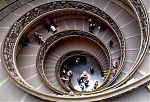Information for other cultural visits
ARA PACIS

The Ara Pacis Augustae (Latin, “Altar of Augustan Peace”; commonly shortened to Ara Pacis) is an altar to Peace, envisioned as a Roman goddess. It was commissioned by the Roman Senate on 4 July 13 BC to honor the triumphal return from Hispania and Gaul of the Roman emperor Augustus, and was consecrated on 30 January 9 BC by the Senate to celebrate the peace established in the Empire after Augustus’s victories. The altar was meant to be a vision of the Roman civil religion. It sought to portray the peace and fertile prosperity enjoyed as a result of the Pax Augusta (Latin, “Augustan peace”) brought about by the military supremacy of the Roman empire, and a visual reminder of the Julio-Claudian dynasty that was bringing it about.
![]()
COLOSSEUM

The Colosseum or Roman Coliseum, originally the Flavian Amphitheatre (Latin: Amphitheatrum Flavium, Italian Anfiteatro Flavio or Colosseo), is an elliptical amphitheatre in the center of the city of Rome, Italy, the largest ever built in the Roman Empire. It is one of the greatest works of Roman architecture and Roman engineering.
![]()
FORI IMPERIALI

The Imperial Fora consist of a series of monumental fora (public squares), constructed in Rome over a period of one and half centuries, between 46 BC and 113 AD. The forums were the center of the Roman Republic and of the Roman Empire.
The Imperial forums, while not part of the Roman Forum, are located relatively close to each other. Julius Caesar was the first to build in this section of Rome and rearranged both the Forum and the Comitium, another forum type space designated for politics, to do so. These forums were the centres of politics, religion and economy in the ancient Roman Empire. It is said that all imperial forums were attempts to outdo the Theatre of Pompey, which held the largest central gathering space in the city for centuries.
![]()
GALLERIA BORGHESE

The Borghese Gallery (Italian: Galleria Borghese) in Rome is an art gallery housed in the former Villa Borghese Pinciana, a building that was from the first integral with its gardens, nowadays considered quite separately by tourists as the Villa Borghese gardens. The Galleria Borghese houses a substantial part of the Borghese collection of paintings, sculpture and antiquities, begun by Cardinal Scipione Borghese, the nephew of Pope Paul V (reign 1605–1621). The Villa was built by the architect Flaminio Ponzio, developing sketches by Scipione Borghese himself, who used it as a villa suburbana, a party villa at the edge of Rome.
Scipione Borghese was an early patron of Bernini and an avid collector of works by Caravaggio, who is well represented in the collection by his Boy with a Basket of Fruit, St. Jerome, Sick Bacchus and others. Other paintings of note include Titian’s Sacred and Profane Love, Raphael’s Entombment of Christ and works by Peter Paul Rubens and Federico Barocci.
![]()
MUSEI VATICANI

The Vatican Museums (Italian: Musei Vaticani), in Viale Vaticano in Rome, inside the Vatican City, are among the greatest museums in the world, since they display works from the immense collection built up by the Roman Catholic Church throughout the centuries.Pope Julius II founded the museums in the 16th century. The Sistine Chapel and the Stanze della Segnatura decorated by Raphael are on the visitor route through the Vatican Museums.As of 2007, they were visited by 4,310,083 people for the year.
![]()
NATIONAL GALLERY OF MODERN ART

Galleria Nazionale d’Arte Moderna, or the National Gallery of Modern Art (GNAM), is an art gallery in Rome, Italy, dedicated to modern art.
It is located at Via delle Belle Arti, 113, near the Etruscan Museum. With its neoclassical and Romantic paintings and sculptures, it marks a dramatic change from the glories of the Renaissance and ancient Rome. Its 75 rooms house the largest collection of works by 19th- and 20th-century Italian artists including Giacomo Balla, Umberto Boccioni, Giorgio de Chirico, Giovanni Fattori, Amedeo Modigliani, Giorgio Morandi, Giacomo Manzù, Alberto Burri, Antonio Canova and Lucio Fontana.
There are also a few notable works by foreign artists, including Calder, Cézanne, Duchamp, Giacometti, Braque, Degas, Wassily Kandinsky, Mondrian, Monet, Jackson Pollock, Rodin, Van Gogh and Klein.
![]()